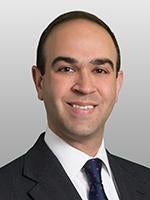Today, the D.C. Circuit Court of Appeals, sitting en banc, held that the structure of the CFPB is constitutional, overturning an earlier ruling by a panel of the Court that would have allowed the President to fire the CFPB director at will. The Court’s decision, finding that the Bureau’s structure is protected by well-established precedent and does not violate the separation of powers provision of Article II of the U.S. Constitution, preserves the CFPB’s current structure as an independent agency headed by a single Director removable only for cause. As a result, the pending nomination of the Bureau’s next Director takes on more weight, while litigation relating to PHH itself has been remanded to the Bureau for further proceedings.
En Banc Panel Opinion
The much anticipated en banc decision overturns the Court’s earlier 2-1 decisionfrom October 11, 2016 which held the CFPB’s structure to be unconstitutional, and cured that defect by striking the for-cause removal provision. The October 2016 decision was vacated pending the rehearing en banc, for which oral argumentswere held in May 2017. Those arguments focused almost exclusively on the constitutionality of the Bureau’s structure. Notably, the U.S. Department of Justice filed an amicus brief on February 17, 2017 supporting the original ruling.
In today’s opinion, Circuit Judge Pillard, writing for the 7-3 majority, relies heavily on Humphrey’s Executor, 295 U.S. 602 (1935), where the Supreme Court, over eighty years ago, found that similar for-cause provisions were permissible with regard to Commissioners on the Federal Trade Commission, an independent “consumer-protection financial regulator.” Judge Pillard notes that the Supreme Court has “since reaffirmed and built on” the protection of independent agency leadership from at-will removal by the President.
For the majority, the application of this precedent to the CFPB is fairly straightforward. The majority opinion takes issue with PHH’s “untenable” distinction between a single-headed agency and a multi-member one when it comes to the removal power, describing PHH’s position as a “wholesale attack on independent agencies —whether collectively or individually led—that, if accepted, would broadly transform modern government.” Instead, in analyzing whether the Dodd-Frank Act limitation on removal unconstitutionally interferes with the President’s Article II powers, the majority reasons that (1) the removal restriction is “wholly ordinary” and that “the verbatim protection” was upheld by Humphrey’s Executor and (2) the “CFPB Director’s autonomy is consistent with a longstanding tradition of independence for financial regulators.” Accordingly, the Court concludes that Humphrey’s Executor and Morrison v. Olson, 487 U.S. 654 (1988), “stand in the way” of finding the CFPB’s structure unconstitutional. Circuit Judge Tatel, in concurrence, succinctly summarized the decision: “PHH is free to ask the Supreme Court to revisit Humphrey’s Executor and Morrison, but that argument has no truck in a circuit court of appeals.”
RESPA
In addition to the agency structure issue, the case presented questions related to the CFPB’s interpretation of RESPA (including the applicable statute of limitations and the section 8(c) exceptions). On those issues, the D.C. Circuit reinstated the three-judge panel decision that found for PHH and remanded the case to the CFPB for decisions consistent with that opinion.
Impact
Of course, much has changed at the CFPB in the time between the oral arguments in May and the decision today. Longtime CFPB Director Richard Cordray resigned on November 24, and, despite ongoing litigation, Mick Mulvaney has taken over as the Acting Director at the Bureau, outlining a new mission for the CFPB under his leadership. The combination of that new mission and the panel opinion on RESPA will give PHH strong arguments for dismissal of this enforcement action. More broadly, the new life given for-cause protections for the Director will add weight and scrutiny to the appointment of the next permanent Director.





 />i
/>i

